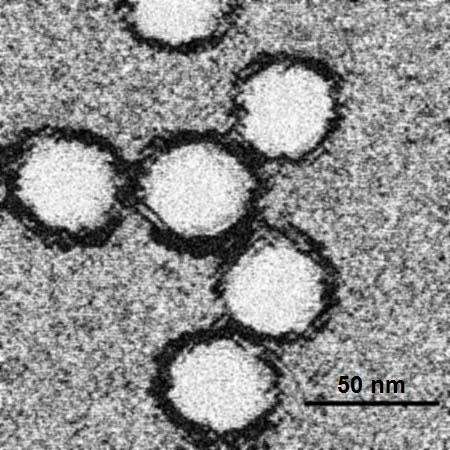Rising temperatures could shift US West Nile virus transmission

West Nile virus spreads most efficiently in the US at temperatures between 24-25 degrees Celsius (75.2-77 degrees Fahrenheit), a new study published today in eLife shows.
The results suggest that climate change could lead to the increased spread of West Nile virus in some places, while potentially causing a decrease in others, and provide insight on where and when these changes might occur.
"As the climate warms, it is critical to understand how temperature changes will affect the transmission of mosquito-borne diseases," says lead author Marta Shocket, who was a Postdoctoral Fellow at Stanford University, California, US, at the time the study was carried out, and is now a Postdoctoral Researcher at the University of California, Los Angeles, US.
To do this, Shocket and her colleagues developed models to assess the impact of temperature on six mosquito-borne viruses, four of which occur in the US. These viruses—the West Nile, St. Louis Encephalitis, Eastern and Western Equine Encephalitis, Sindbis, and Rift Valley fever viruses—were grouped together for this study as they share some of the same species of mosquito carriers.
The models used laboratory experiments that measured how different temperatures affect the mosquitoes' survival, biting rate, reproduction, development and ability to transmit the virus. The team validated their West Nile model using data on human virus transmission in the US. They found that West Nile virus is transmitted most readily at moderate temperatures, while extreme temperatures limit where its mosquito carriers could live and successfully transmit the virus.
"Most of the viruses covered in this work are from more temperate areas than more commonly studied tropical diseases," Shocket explains. "We compared these results to those of tropical diseases like malaria and dengue and found that the optimal temperatures and cold thermal limits for virus spread are cooler. This means the viruses spread more efficiently at cooler temperatures compared to more tropical diseases, as you would expect."
The results suggest that mosquito-borne diseases could take a greater toll in the US as temperatures rise, especially as most of the population (70%) lives in places that are currently below the optimal temperature and will likely see increased transmission with climate warming. This is compared to 30% of the population who live in places where summer temperatures are above the optimal temperature, meaning transmission will likely decrease with climate warming. Temperature increases could also extend virus transmission seasons earlier into the Spring and later into the Fall.
"Climate change is poised to increase the transmission of West Nile and other mosquito-borne viruses in much of the US," concludes senior author Erin Mordecai, Assistant Professor of Biology at Stanford University. "But these diseases also depend on human contact with mosquitoes that also contact wildlife, so factors like human land use, mosquito control, mosquito and virus adaptations, and the emergence of new viruses make predicting the future of mosquito-borne disease a challenge."
More information: Marta S Shocket et al, Transmission of West Nile and five other temperate mosquito-borne viruses peaks at temperatures between 23°C and 26°C, eLife (2020). DOI: 10.7554/eLife.58511


















